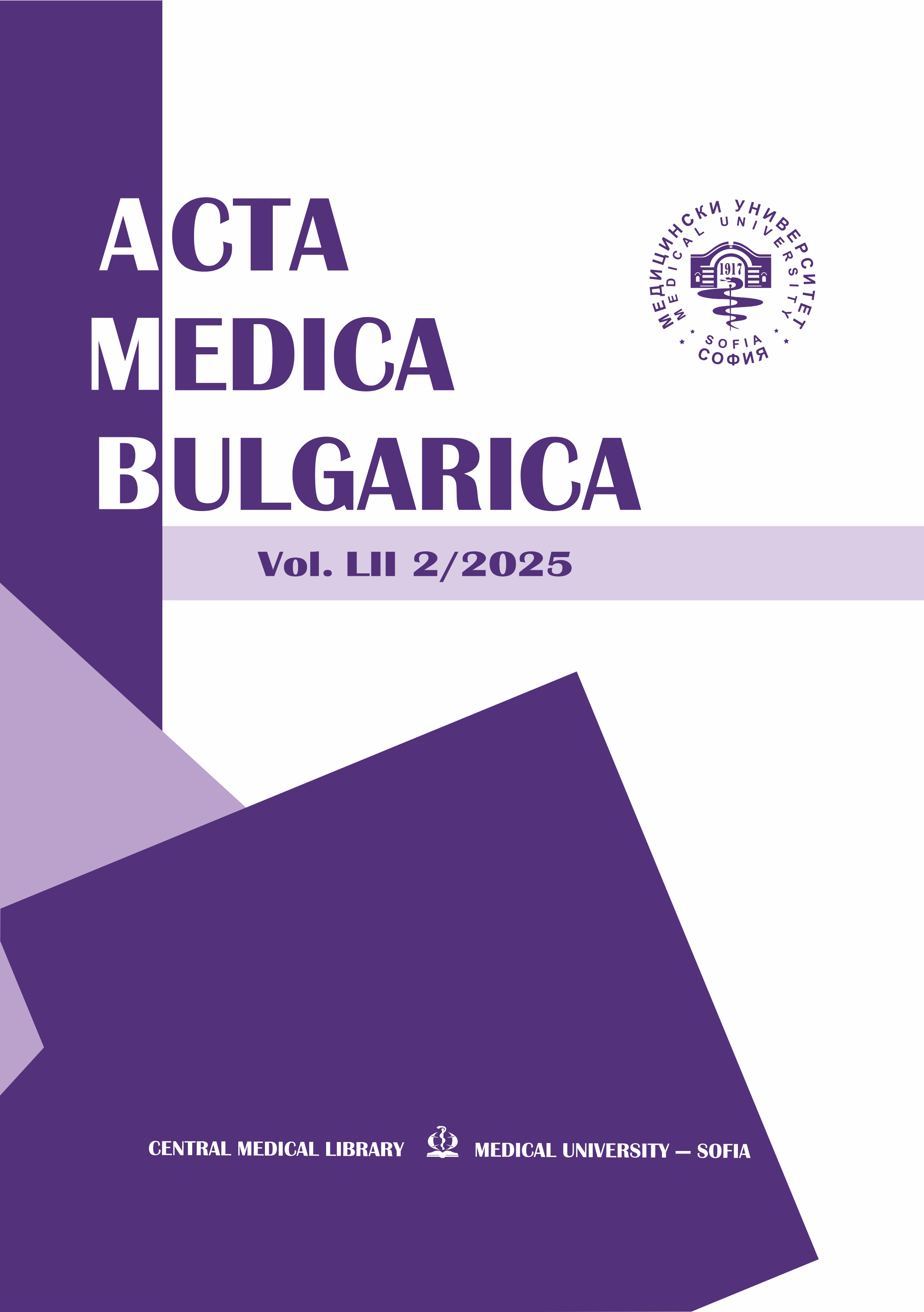The role of the vagus nerve in depressive disorders: a literature review and the potential of vagotomy to create a depression phenotype in rodents
DOI:
https://doi.org/10.2478/AMB-2025-0051Keywords:
vagotomy, depression, MDD, anxiety, rodents, VNSAbstract
Major depressive disorder (MDD) affects 280 million people worldwide and is a major global health burden due to its link with suicide, physical comorbidities, and inadequate response to pharmacotherapy in many patients. The monoamine theory of depression has provided therapeutic targets, yet exploring additional mechanisms could enhance therapeutic outcomes and increase remission rates. This review examines the potential role of the vagus nerve in depression. Vagus Nerve Stimulation (VNS) has shown promising results in treating refractory depression and has been FDA-approved for MDD since 2005. Clinical and preclinical evidence suggests that vagotomy or vagus nerve ablation can both induce and alleviate depressive symptoms, depending on the context. Furthermore, we propose that structural and biochemical compromise of the vagus nerve may contribute to affective disorders, including depression, bipolar disorder, and anxiety phenotypes. To test this hypothesis, the intervention in question would involve performing vagotomy in rodents and the subsequent investigation for depression and anxiety phenotypes in the affected animals.
References
Moncrieff J, Cooper RE, Stockmann T et al. The serotonin theory of depression: a systematic umbrella review of the evidence. Mol Psychiatry. 2023 Aug;28(8):3243-3256.
Howland RH. Vagus Nerve Stimulation. Curr Behav Neurosci Rep. 2014 Jun;1(2):64-73.
Bunney WE Jr, Davis JM. Norepinephrine in depressive reactions. A review. Arch Gen Psychiatry. 1965 Dec;13(6):483-94.
Delgado PL. Depression: the case for a monoamine deficiency. J Clin Psychiatry. 2000;61 Suppl 6:7-11.
GBD 2017 Disease and Injury Incidence and Prevalence Collaborators. Global, regional, and national incidence, prevalence, and years lived with disability for 354 diseases and injuries for 195 countries and territories, 1990-2017: a systematic analysis for the Global Burden of Disease Study 2017. Lancet. 2018 Nov 10;392(10159):1789-1858.
Groves DA, Brown VJ. Vagal nerve stimulation: a review of its applications and potential mechanisms that mediate its clinical effects. Neurosci Biobehav Rev. 2005 May;29(3):493-500.
Harden CL, Pulver MC, Ravdin LD et al. A Pilot Study of Mood in Epilepsy Patients Treated with Vagus Nerve Stimulation. Epilepsy Behav. 2000 Apr;1(2):93-99.
Bottomley JM, LeReun C, Diamantopoulos A et al. Vagus nerve stimulation (VNS) therapy in patients with treatment resistant depression: A systematic review and meta-analysis. Compr Psychiatry. 2019 Dec 12;98:152156.
Krahl SE, Clark KB, Smith DC, Browning RA. Locus coeruleus lesions suppress the seizure-attenuating effects of vagus nerve stimulation. Epilepsia. 1998 Jul;39(7):709-14.
Morris LS, McCall JG, Charney DS, Murrough JW. The role of the locus coeruleus in the generation of pathological anxiety. Brain Neurosci Adv. 2020 Jul 21;4:2398212820930321.
Elger G, Hoppe C, Falkai P et al. Vagus nerve stimulation is associated with mood improvements in epilepsy patients. Epilepsy Res. 2000 Dec;42(2-3):203-10.
Rush AJ, George MS, Sackeim HA et al. Vagus nerve stimulation (VNS) for treatment-resistant depressions: a multicenter study. Biol Psychiatry. 2000 Feb 15;47(4):276-86.
Rush AJ, Marangell LB, Sackeim HA et al. Vagus nerve stimulation for treatment-resistant depression: a randomized, controlled acute phase trial. Biol Psychiatry. 2005 Sep 1;58(5):347-54.
Marangell LB, Rush AJ, George MS et al. Vagus nerve stimulation (VNS) for major depressive episodes: one year outcomes. Biol Psychiatry. 2002 Feb 15;51(4):280-7.
Schlaepfer TE, Frick C, Zobel A et al. Vagus nerve stimulation for depression: efficacy and safety in a European study. Psychol Med. 2008 May;38(5):651-61.
Fülling C, Dinan TG, Cryan JF. Gut Microbe to Brain Signaling: What Happens in Vagus. Neuron. 2019 Mar 20;101(6):998-1002.
Gershon MD, Margolis KG. The gut, its microbiome, and the brain: connections and communications. J Clin Invest. 2021 Sep 15; 131(18):e143768.
Han W, Tellez LA, Perkins MH et al. A Neural Circuit for Gut-Induced Reward. Cell. 2018 Oct 18;175(3):665-678.e23.
Goehler LE, Gaykema RP, Opitz N et al. Activation in vagal afferents and central autonomic pathways: early responses to intestinal infection with Campylobacter jejuni. Brain Behav Immun. 2005 Jul;19(4):334-44.
Bravo JA, Forsythe P, Chew MV et al. Ingestion of Lactobacillus strain regulates emotional behavior and central GABA receptor expression in a mouse via the vagus nerve. Proc Natl Acad Sci U S A. 2011 Sep 20;108(38):16050-5.
Proot L, Derom F, Van Bastelaere W. Transthoracic vagotomy for recurrent peptic ulcer after gastrectomy. An appraisal of fifteen years experience. Acta Chir Belg. 1978 Sep-Oct;77(5):351-4.
Glen AI, Cox AG. Psychological factors, operative procedures, and results of surgery for duodenal ulcer. Gut. 1968;9(6):667-71.
Joo MK, Kim DH. Vagus nerve-dependent effects of fluoxetine on anxiety- and depression-like behaviors in mice. Eur J Pharmacol. 2023 Aug 15;953:175862.
Yang Y, Eguchi A, Mori C, Hashimoto K. Depression-like phenotypes in mice following common bile duct ligation: Insights into the gut-liver-brain axis via the vagus nerve. Neurobiol Dis. 2024 Mar;192:106433.
Willner P. The validity of animal models of depression. Psychopharmacology (Berl). 1984;83(1):1-16.
Malki K, Keers R, Tosto MG et al. The endogenous and reactive depression subtypes revisited: integrative animal and human studies implicate multiple distinct molecular mechanisms underlying major depressive disorder. BMC Med. 2014 May 7;12:73.
Antkiewicz-Michaluk L, Wąsik A, Możdżeń E et al. Antidepressant-like effect of tetrahydroisoquinoline amines in the animal model of depressive disorder induced by repeated administration of a low dose of reserpine: behavioral and neurochemical studies in the rat. Neurotox Res. 2014 Jul;26(1):85-98.
Joo MK, Kim DH. Vagus nerve-dependent effects of fluoxetine on anxiety- and depression-like behaviors in mice. Eur J Pharmacol. 2023 Aug 15;953:175862.
Rush AJ, Marangell LB, Sackeim HA et al. Vagus nerve stimulation for treatment-resistant depression: a randomized, controlled acute phase trial. Biol Psychiatry. 2005 Sep 1;58(5):347-54.
Rush AJ, Sackeim HA, Marangell LB et al. Effects of 12 months of vagus nerve stimulation in treatment-resistant depression: a naturalistic study. Biol Psychiatry. 2005 Sep 1;58(5):355-63
Downloads
Published
Issue
Section
License
Copyright (c) 2025 F. Ataker, D. Pencheva, D. Bakalov (Author)

This work is licensed under a Creative Commons Attribution-NonCommercial-NoDerivatives 4.0 International License.
You are free to share, copy and redistribute the material in any medium or format under these terms.


 Journal Acta Medica Bulgarica
Journal Acta Medica Bulgarica 